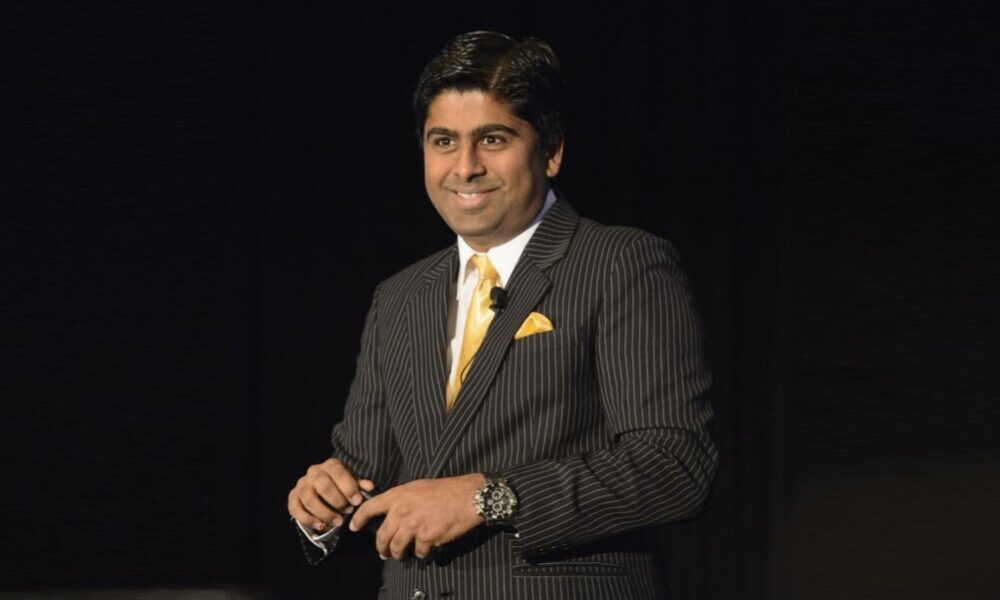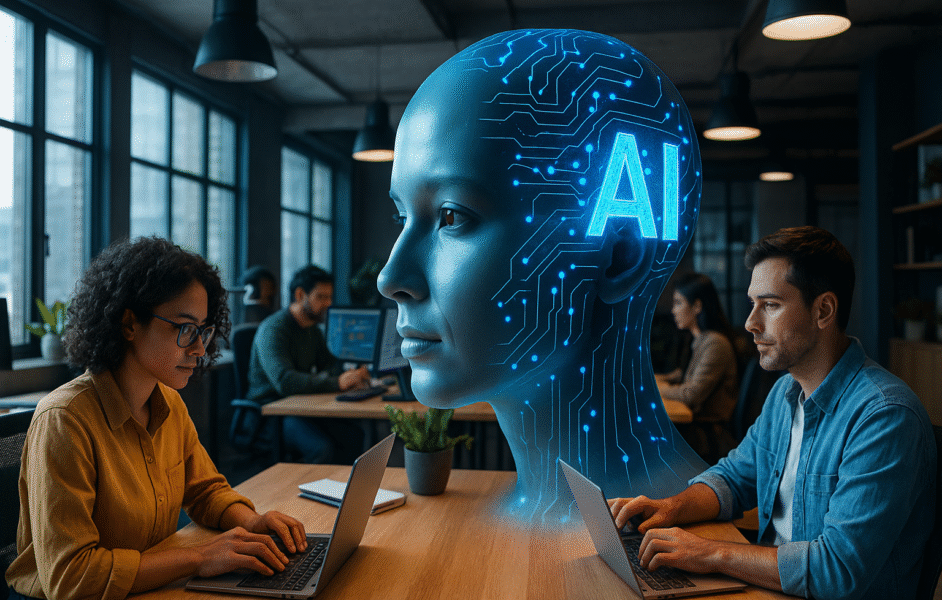Google’s newly unveiled Veo 3 model is seriously redefining what AI-generated video can do. Announced at Google I/O 2025, Veo 3 is producing video clips so realistic that most viewers struggle to tell them apart from live-action footage.
Veo 3 introduced capabilities—like native audio generation and cinematic visual fidelity—that significantly lower the barrier to professional-grade video production.
Breaking the “Silent Era” with Integrated Audio
For the first time, an AI video generator comes with its own soundscape. Veo 3 generates sound effects, ambient noise, and even character dialogue to accompany each scene, all in sync with the action. Google DeepMind’s CEO Demis Hassabis framed it as “emerging from the silent era of video generation”, where creators can prompt Veo 3 with not only a scene description but also how it should sound.
Under the hood, the model analyzes its own generated frames and automatically synchronizes suitable audio, so that footsteps thud, doors creak, or characters speak exactly when and how they should. This built-in audio capability is a game-changer – previous generative models produced mute footage, leaving users to manually add sound. By contrast, Veo 3 can spit out a complete video clip with rich audio, effectively handling the roles of videographer and sound designer in one go.
The addition of realistic audio greatly boosts immersion and usefulness for creators. Dialogue generation is particularly striking – give Veo 3 a script or let it invent character speech, and it will produce voices matched to the visuals, lips moving in perfect sync. Background noises and music come through as well, whether it’s birds chirping in a park scene or a dramatic orchestral score swelling at the climax.
Google says Veo 3 was trained to blend these elements seamlessly, informed by DeepMind’s research into video-to-audio modeling. In practical terms, a solo creator can now type “a thunderstorm at sea with a sailor shouting orders” and get a short film clip with crashing waves, howling wind, and the sailor’s voice audible over the storm – all generated in one pass. This end-to-end audio-visual generation removes another layer of expertise needed to produce professional videos, making high-quality results accessible to those with no sound editing skills.
Cinematic Quality and Uncanny Realism
Veo 3 brings its footage closer to Hollywood quality than ever before. The model outputs sharper, more detailed video (up to 4K resolution) and shows a strong grasp of real-world physics and lighting. Early examples have stunned viewers with their lifelike look: scenes generated by Veo 3 often have no obvious tells of being synthetic. Motion is smooth and coherent across frames – the AI rarely breaks continuity, meaning you won’t see jittery artifacts or characters morphing unpredictably from one moment to the next.
If a car speeds around a corner, the dust trails and shadows behave naturally; if a person runs, their movements respect physical laws like momentum and gravity. This adherence to reality extends even to notoriously tricky details like human hands and speech. Veo 3’s people have natural proportions (yes, five fingers per hand) and their facial movements sync accurately to spoken audio – a feat that makes on-screen dialogue far more convincing.
All these improvements result from both a larger training corpus and model optimizations, allowing Veo 3 to translate complex, detailed prompts into polished, true-to-life videos.
Importantly, the model’s focus on cinematic output allows it to achieve an artistic quality that was previously out of reach without a studio. Google touts Veo 3’s “greater realism and fidelity, including 4K output,” and indeed the texture, lighting, and camera depth of field in its demo clips evoke a professional film look.
PJ Ace/X
Precision Prompts and Creative Control Made Easy
One of Veo 3’s standout strengths is how faithfully it follows the director’s vision as described in a prompt. The model excels at interpreting complex, multi-line prompts – even a short story or storyboard – and translating them into a coherent video. Google reports significant improvements in prompt adherence: Veo 3 can track a sequence of actions or multiple scene changes dictated in text and render them with the correct timing and detail.
For creators, this means you can outline an entire concept (“Scene 1: hero enters a dark room… Scene 2: a sudden explosion causes chaos…”) in one go, and Veo 3 will generate a clip that hits those beats in order. This level of understanding unlocks far more sophisticated storytelling via text than earlier generative models, which often struggled to maintain consistency over even a few seconds of video. Veo 3 is effectively acting as a camera operator, set designer, and editor that gets your script – following stage directions about characters and camera angles with newfound accuracy.
Google has augmented this prompt-driven power with user-friendly tools that give creators fine-grained control over the results without needing editing expertise. Alongside Veo 3, the company introduced Flow, an AI filmmaking app custom-built to harness the model’s capabilities.
Flow provides a suite of features – from virtual “camera controls” (to set up shots with specific angles or smooth pans) to a “Scene Builder” that lets you extend or tweak a generated scene with continuous motion and consistent characters. For example, you can ask Veo to generate an outdoor market scene, then use Scene Builder to extend that clip, revealing more of the environment or transitioning into the next scene seamlessly. Flow even allows object-level edits: creators can add or erase elements in a clip or change the aspect ratio (say, turning a portrait-oriented video into a landscape widescreen) with the model filling in new background as needed. All of this is achieved through simple prompts or UI sliders rather than manual animation.
The result is an iterative, nearly effortless creative process – you sketch an idea in words, get a video, then refine it by instructing the AI to adjust the “camera” or “recast” a prop, and it obliges. This tight human-AI collaboration means even those new to video production can achieve complex shots and edits that normally require advanced skills or a crew.
Democratizing Professional Video Production
The launch of Veo 3 signals a new era where Hollywood-level production values are within reach for a much wider pool of creators and businesses. By automating much of the heavy lifting – cinematography, special effects, even sound design – Veo 3 dramatically reduces the resources needed to produce a polished video.
An individual YouTuber or a small startup can now create footage that looks and sounds like it was made by a full studio team. This greatly lowers the entry cost for producing commercials, trailers, or other promotional media. In fact, industry analysts note that tools like Veo 3 could be useful for more commercial marketing and media work, enabling rapid turnaround of ads and content without large crews or budgets. Need a last-minute video spot for a campaign? Rather than hiring actors and renting equipment, a marketing team could generate a realistic 30-second clip from a prompt and have it ready the same day.
It’s worth noting that at launch, Veo 3’s most advanced features (like audio generation) are initially available through Google’s $249/month AI Ultra subscription and enterprise cloud service. While this premium access might limit hobbyist usage in the immediate term, the trajectory is clear – these capabilities will only grow more accessible and affordable over time. Even now, that subscription cost is a fraction of what a professional video shoot or post-production work would run. In the big picture, Veo 3 is a preview of an AI-powered content creation pipeline that scales quality with minimal overhead, fundamentally changing the economics of video production.
A New Creative Frontier – and New Responsibilities
Veo 3’s arrival is undoubtedly a boon for creativity and efficiency, but it also forces the creative industry to grapple with important implications. On one hand, the line between real and synthetic content is blurring: the internet is already awash with Veo-generated clips that amaze viewers with their realism – and unsettle them with how hopelessly blurred reality and AI can become.
Filmmakers and video professionals are confronting a future where AI can produce convincing footage on demand. This raises questions about originality, authenticity, and the role of human craft. Some artists and purists are understandably wary. Detractors dismiss AI videos as soulless slop no matter how technically impressive, fearing a flood of low-quality content or loss of jobs. These concerns echo the disruption seen in photography and design with the rise of AI: when creation is democratized, it challenges existing norms of ownership and labor.
On the other hand, proponents argue that AI like Veo 3 is just the next evolution in creative technology – not a replacement for human creativity, but a powerful new instrument for it. Google has built safeguards into Veo 3 to address some pitfalls, including invisible watermarking (via DeepMind’s SynthID) on each AI-generated frame to help detect and label AI-made videos. The model also has content guardrails: testers found it refused prompts to produce deepfake-style political misinformation or harmful scenes. These responsible AI measures will be critical as hyper-real AI videos become easier to make.
Meanwhile, many forward-thinking creators are embracing the tool, focusing on how it can augment their imagination rather than replace it. By collaborating with filmmakers during development, Google aimed to ensure Veo 3 supports creative workflows instead of undermining them. The result, ideally, is an AI that takes on tedious production logistics, freeing human creators to concentrate on storytelling, style, and ideas.
From content studios to advertising agencies, the message is that AI video generation is here to stay – and it’s only getting more capable. Veo 3 exemplifies this trend at the highest level of quality. It lowers barriers and costs, but also challenges creatives to differentiate their work in a world where anyone can produce jaw-dropping visuals.
As we stand at this new frontier, it’s clear that tools like Veo 3 will play a prominent role in the future of filmmaking and media. The creative industry as a whole will need to adapt, establishing new norms for AI-assisted content. In Google’s view, this technology is an “enabler, helping a new wave of filmmakers more easily tell their stories”, ultimately unlocking new voices and ideas that might never have made it to screen otherwise. In the coming years, the storytellers who thrive will likely be those who learn to wield AI models like Veo 3 as part of their artistic toolkit – leveraging the efficiency and scale of generative video while steering it with distinctly human creativity and vision.
Credit: Source link








































